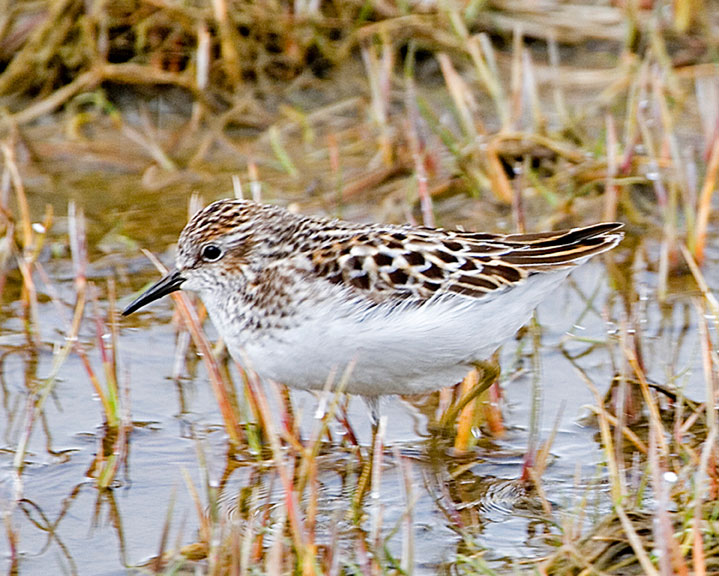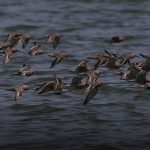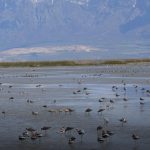Great Marsh
Location
Massachusetts, United States
Category
Regional
Basis for Designation
Supports more than 67,000 shorebirds representing 30 species.
Size
10,117 hectares (25,000 acres)
Date Designated
November 2004
Site Owner
Parker River National Wildlife Refuge
The Trustees of Reservations
Essex County Greenbelt Association
Site Partners
Massachusetts Audubon Society
Parker River Clean Water Association
Eight Town and the Bay Committee
Friends of Parker River Refuge
Essex National Heritage Commission
Overview
The Great Marsh is the largest salt marsh in New England and includes over 20,000 acres of marsh, barrier beach, tidal river, estuary, mudflat, and upland islands extending across the Massachusetts North Shore, from Gloucester to Salisbury. In recognition of these extraordinary resources, a portion of this area was designated by the state in 1979 as the Parker River/Essex Bay Area of Critical Environmental Concern. The Great Marsh is an internationally recognized Important Bird Area (IBA) because it contributes to the preservation of many breeding and migratory birds. With its network of waterways, beaches, parks, and wildlife refuges, the Great Marsh is an outstanding destination to enjoy boating, fishing, birdwatching, hiking, and beach activities throughout the cities and towns of Gloucester, Essex, Ipswich, Rowley, Newbury, Newburyport, and Salisbury.
The Great Marsh is the largest salt marsh in New England.
Conservation Status and Special Resources
A comprehensive management approach is in practice within the Great Marsh. The entire area is very fortunate to be afforded protection under the State’s designation as an Area of Critical Environmental Concern (ACEC). This designation carries a high level of concern and protection enforced by the State. Additionally, the U.S. Fish and Wildlife Service (USFWS) manages Parker River National Wildlife Refuge (NWR) primarily for the benefit of wildlife, with particular emphasis on migratory birds. The non-profit organizations within the Great Marsh promote conservation, protection, and open space. The Massachusetts Natural Heritage and Endangered Species Program database indicates that the Parker River / Essex Bay ACEC and Great Marsh provide habitat for 35 animal and plant species listed as “rare” and protected under the States Endangered Species Act. Plant and animal species are also protected under the State’s Wetland Protection Act and implementing regulations.

Least Sandpiper (Calidris minutilla). Photo: USFWS.
Shorebirds
Some 67,000 shorebirds representing more than 30 species have been recorded at the Great Marsh, making it one of the nation’s top birdwatching spots. A study conducted on shorebird use of impoundments at the Parker River NWR determined that the Refuge plays a more important role during the fall migration. Past and current shorebird monitoring activities include standardized bi-monthly shorebird surveys on the Refuge, and Great Marsh Coalition participation in the International Shorebird Survey (ISS) and Massachusetts Audubon surveys.
The major disturbance to shorebirds continues to be human-related recreational pursuits, namely all traditional beach-use activities, free-roaming pets, off-road vehicle (ORV) usage, boating, and shell-fishing. A study under consideration by the Refuge would determine the impacts of various public-use beach activities on shorebirds. In addition to human disturbance, storm events and extreme high tides cause nest abandonment and destruction for some shorebird species. Avian and terrestrial predation also are important factors limiting nesting success and shorebird production.
Threats to Great Marsh Habitats
The continued development of lands adjacent to the Great Marsh does pose threats, as do high bacterial counts from poorly functioning septic systems. Pet waste and livestock- and horse-pasture manure piles contaminate waterways and shellfish beds. Invasive wetland plants are widespread and are encouraged by tidal restrictions. Erosion of salt marsh banks due to speeding boats and jet skis pose threats to the integrity of the marsh.
Management
Management challenges include: invasive plants, tidal restrictions, salt marsh ditching, mosquito-control issues, and point and non-point source pollution sources. There is an interest and described need to seed unproductive shellfish beds, and shellfish aquaculture research that addresses potential impacts of this to shorebirds needs to be conducted.









